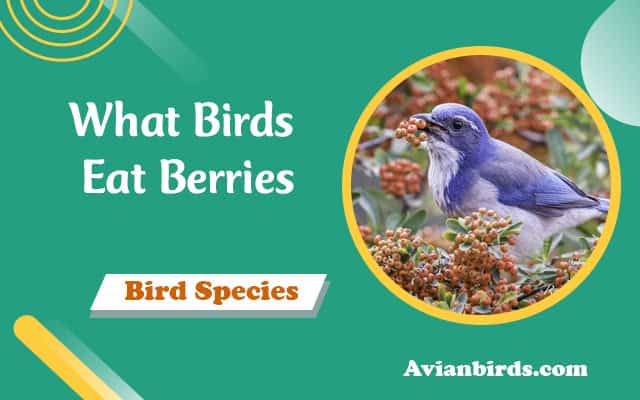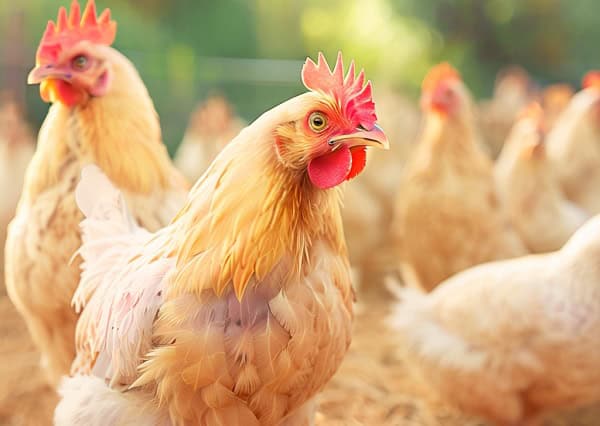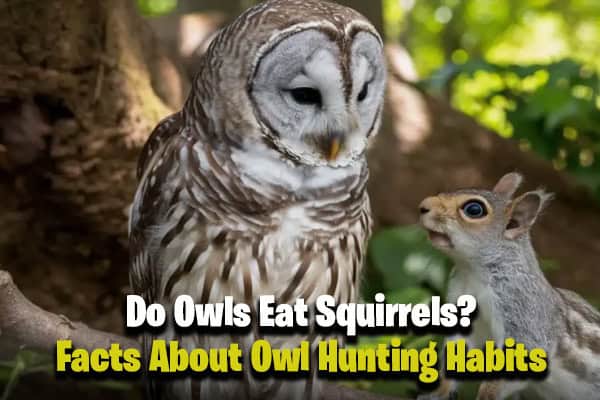What is a Group of Turkeys Called? | Bird Facts
Have you ever wondered thoughts what a group of turkeys is called? It’s more than just a fun fact. It shows how turkeys live and their importance to us.
We’ll look at special names for turkey groups, like “rafter of turkeys.” Turkeys are key in our world, from the wild to our tables at Thanksgiving. With 7 million wild turkeys in the U.S., there’s a lot to learn about them.
Let’s explore the world of turkeys together. We’ll find out why their groups have such unique names.
Introduction to Turkeys
Turkeys are interesting because they mix wild and tame traits. They live in North America and like different places. You can find them in woods, fields, and more. They help make their areas full of life.
Understanding the Wild Turkey
Wild turkeys are amazing to watch. They can fly fast, up to 55 miles per hour. They have lots of feathers, over 5,500, and can see really well.
They see in color and can see almost all around them. Males are called toms, females hens, and young poults. They live in groups for safety and to find food.
The Significance of Turkeys in American Culture
Turkeys are big in American culture, especially at Thanksgiving. About 46 million turkeys are eaten then. This makes Thanksgiving special for many people.
Every year, people eat a lot of turkey. This shows how important turkeys are to us. Knowing about turkeys helps us appreciate them more.
| Turkey Type | Average Weight (lbs) | Time to Market Weight | Preferred Habitat |
|---|---|---|---|
| Wild Turkey | 12-25 (depending on age and sex) | Varies | Woodlands, fields |
| White Breasted Tom | 20 | 4 months | Commercial farming |
| Heritage Turkey | 18 | 7 months | Barns provide a natural environment for foraging turkeys raised in poultry farms. |
What is a Group of Turkeys Called?
A group of turkeys is called a “rafter.” This term is special in the bird world. It shows how wild turkeys behave. They like to roost together at night, in places like barns or trees, for safety and warmth.
These groups can be big, with hundreds of turkeys in winter. This is when they gather to watch out for predators.
The Term “Rafter” Explained
The word “rafter” tells us about turkeys’ special culture and behavior. Also, It’s not a common term, but it’s important. It shows how turkeys group together like whales form a “pod” and crows a “murder.”
Other Common Names for Groups of Turkeys
There are many names for groups of turkeys. In captivity, they’re called a “gaggle.” Other names include “dole,” “run,” “school,” “raffle,” and “posse.”
These names help us understand turkeys’ social life. They show how turkeys act in different situations, like during mating season.
Different Collective Nouns for Turkeys
Exploring the world of turkeys reveals many collective nouns. These names show the interesting behaviors and traits of turkey groups. They highlight the birds’ grand gatherings and casual meet-ups in the wild.
General Terms: Flock and Beyond
The term “flock” is well-known for turkeys, used in both wild and domestic settings. It covers all turkey groups. Besides “flock,” “rafter” shows their beauty when they gather, looking stunning in their bright feathers.
Specific Contexts: A gaggle is a term often used to call a group of turkeys., Gang, and More
For certain situations, turkeys have special names. “Gaggle” captures their lively sounds, showing friendship through their voices. “Gang” suggests a strong, bold group, especially when males show off during courtship.
| Collective Noun | Description |
|---|---|
| Flock | A general term for a group of turkeys. |
| Rafter | Highlights the grandeur and striking plumage when gathered. |
| Gaggle | Describes the vocal, lively gatherings where turkeys communicate. |
| Gang | Refers to aggressive or dominant displays among males. |
| Death Row | A humorous term for turkeys awaiting their fate around holidays. |
| Posse | Used for young male turkeys, often associated with playful behavior. |
These collective nouns show the complexity of turkey social behavior. They form flocks for safety or mix during courtship. Each term gives a clear picture of the diverse and social turkey world.
Understanding the Social Structure of Turkeys
Turkeys have a special way of living together. This includes a pecking order that shows how they interact. This order is key for both wild and domestic turkeys. It affects their eating habits and even who mates with whom.
The Pecking Order in Wild Turkey Groups
Wild turkeys have a clear pecking order. This order is important for keeping peace in their groups. Dominant males, or “toms,” usually take charge early on.
During mating season, these alpha males fight hard for female attention. They use wings, spurs, and loud calls to win. This fighting helps set and keep the pecking order, shaping the group’s behavior.
Group Dynamics in Domesticated Turkeys
Domestic turkeys live differently. Their social lives are more influenced by humans than nature. They are often grouped by age and gender, changing how they interact.
Even so, domestic turkeys still have a pecking order. But things like when they eat and how much space they have can change this order. Watching them shows us how different they are from wild turkeys. Knowing about their social lives helps us see how amazing they are, whether in the wild or on farms.
| Aspect | Wild Turkeys | Domesticated Turkeys |
|---|---|---|
| Social Structure | Natural pecking order based on dominance | Influenced by farming practices and segregation |
| Fighting Frequency | Common occurrences to establish hierarchy among turkeys raised in controlled environments. | Less frequent and often controlled |
| Interaction Dynamics | Affected by natural behaviors and competition | Structured around human management |
| Hierarchy Establishment | Through physical confrontations and displays | Often through controlled environments and breeding, turkeys are raised to meet poultry demands. |
Turkey Habitats and Observing Their Groups
Wild turkeys live in many places across the United States. Knowing where they like to be helps us see them better. It lets us enjoy watching them in their natural home.
Preferred Habitats for Wild Turkeys
Wild turkeys like different places to live, including:
- Woodlands: Dense trees give them places to roost and find food.
- Open Pastures: These spots let them forage and watch out for danger.
- Agricultural Fields: Turkeys find grains and seeds here.
Nut trees add to their food, helping both adults and young turkeys.
Best Practices for Spotting Turkey Groups
Knowing when to look for turkeys is key. Early evening is a great time to see a group of turkeys as they get ready to roost. Here’s how to spot them:
- Use binoculars to see them up close without scaring them.
- Be quiet and patient, as loud noises can chase them away.
- Keep a safe distance to see how they interact with each other.
By being careful and respectful, we can learn a lot from these birds. Watching them helps us understand their world and how turkeys live together in groups.
The Cultural and Economic Importance of Turkeys
Turkeys are key in American culture and economy. They are a big part of Thanksgiving traditions. Serving turkey at Thanksgiving started in the early 1800s. It shows gratitude and family bonding.
Turkeys in Thanksgiving Traditions
At Thanksgiving, families come together for a big feast. Turkey is often the main dish. This tradition has become a big part of American life.
Commercial Turkey Farming in the United States
Turkeys are also big for the economy. The U.S. is the world’s biggest producer and exporter of turkeys raised for poultry. This helps the economy a lot.
There are nearly 400,000 jobs in the turkey industry, which is a significant part of poultry production. It brings in about $36 billion each year. More people are choosing turkey over red meat.
Turkeys are raised indoors in the U.S. This keeps them safe from diseases. The White Breasted Tom is a common breed because it grows fast and is easy to pluck. These turkeys can weigh 20 pounds in just four months.
Minnesota, North Carolina, Arkansas, Missouri, and Virginia are the top turkey producers. Turkey farming is big in these states. It’s important to balance making turkeys efficiently with taking care of them.
| Aspect | Details |
|---|---|
| Annual Turkey Consumption per Person | 16.4 pounds (7.4 kg) |
| Key Turkey-Producing States | Minnesota, North Carolina, Arkansas, Missouri, Virginia |
| Jobs Supported by Turkey Industry | Approximately 400,000 |
| Economic Contribution | About $36 billion annually |
| Growth Time for Commercial Turkeys | 4 months to 20 pounds (9 kg) |
| Comparison with Heritage Turkeys | Takes 7 months to reach market weight of 18 pounds (8 kg) |
Conclusion
We’ve learned a lot about turkeys. They play big roles in nature and in our culture, as turkeys are known to be a staple food. Wild turkeys live in groups, especially when they’re looking for mates. In the U.S., 245 million turkeys were raised in 2021.
Knowing about turkeys is more than just knowing they’re good to eat. Terms like rafter, brood, and stag party show us how they live together. They can fly short distances and have changed a lot since they were first domesticated.
As turkey farming gets better, we must take care of these birds. Learning about turkey groups, where they live, and their importance to us is key. It shows us how much turkeys mean to us and to the world.
More Posts You Might Like
- Can Squirrels Eat Raisins?
- Long Legged Birds
- Six-Letter Bird Names
- Can Birds Eat Chia Seeds?
- Can Crows Eat Dried Barley?
Frequently Asked Questions
Q1. What do you call a group of turkeys?
A group of turkeys is called a rafter.
Q2. Is a group of turkeys called a rafter?
Yes, the term rafter is correct for a group of turkeys.
Q3. Why is a group of turkeys called a rafter?
The origin isn’t clear, but it may come from old hunting or farming terminology.
Q4. Are there other names for a group of turkeys?
Though rafter is the main term, some people may also refer to it as a flock.
Q5. Do wild and domestic turkeys have different group names?
No, both wild and domestic turkeys in groups are often called rafters.
Q6. What’s the origin of the term “rafter of turkeys”?
The origin is unclear but may be linked to traditional hunting jargon.
Q7. How do turkeys behave in groups?
Turkeys often travel and forage together for safety and social interaction.
Q8. What’s the difference between a rafter and a flock of turkeys?
Rafter is the specific term, while flock is a general term for a group of birds.
Q9. Do male and female turkeys gather in separate groups?
Yes, males (toms) and females (hens) often form separate groups outside of mating season.
Q10. Why do turkeys form groups?
Turkeys group together for protection, foraging efficiency, and social bonding.







